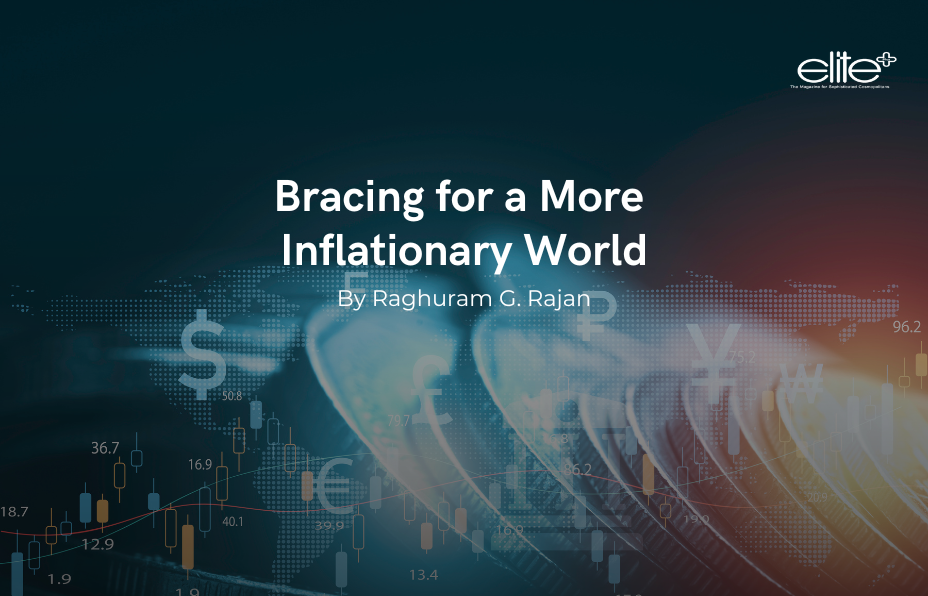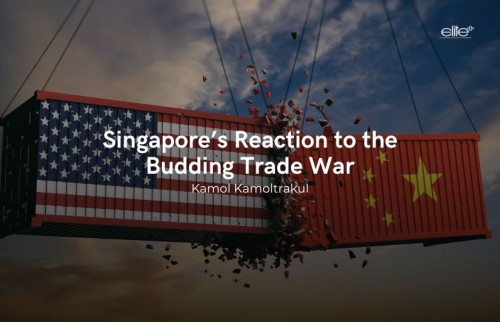Bracing for a More Inflationary World

By Raghuram G. Rajan
CHICAGO – In many countries, the political landscape is changing dramatically, possibly auguring more radical policies in both the United States and Europe. Faced with societal aging, de-globalization, climate change, anti-immigration sentiment, and technological advances, central banks will feel pressure from many different directions in the coming years.
One obvious concern is fiscal policy and debt. When radical politicians come to power, they rarely have austerity in mind. Most arrive with big audacious plans requiring massive increases in spending. (Argentinian President Javier Milei is an exception, in part because he was elected to reverse the policies of the previous radicals).
But moderate leaders also will feel greater pressure to spend in the years ahead. Real (inflation-adjusted) interest rates are likely to return to their long-term trend, which means debt-service costs will eat up more of governments’ budgets. Military spending also will undoubtedly rise, given the state of geopolitics, and spending on education will probably have to increase as governments try to position their populations for an era of artificial intelligence. On top of it all, climate-related spending and subsidies have become more urgent. Political dysfunction makes it hard to tax emissions, which would be more fiscally prudent, or raise tax revenues more generally.
All this additional net spending implies that central banks will have to offset governments’ expansionary impulses with tighter policy. But with many countries already heavily indebted, sustained higher real policy rates will fuel doubt about debt sustainability. Will central banks blink and allow higher price growth, in the hope of inflating away some of the debt? Or will they stand up to their respective governments, raise rates, and risk a “Liz Truss moment”? When fiscal priorities and debt levels determine the scope of monetary policy, economists call it “fiscal dominance.” We are likely to see more cases of this.
What about demographic trends? Charles Goodhart and Manoj Pradhan believe that with the Chinese working-age population shrinking, and populations aging elsewhere, growth will slow as the labor force declines. Meanwhile, spending will rise – partly to meet the need for more elder care – and wage growth may strengthen as workers become scarce. All this will be inflationary.
Of course, others believe that savings will rise with aging, and that immigration into aging countries will help stave off labor shortages. But given many aging countries’ open refusal to accept a large number of immigrants, this optimistic scenario seems less likely.
Ever since Donald Trump imposed sweeping tariffs on imports from China, we have been witnessing a broad-based return of protectionism, translating first into lower cross-border investment. So far, trade has held up, partly because Chinese inputs are being shipped for final assembly to other countries before being sent to the United States. But if Trump returns to the White House next January, he will try to end such trans-shipments, while raising tariffs all around.
De-globalization will continue to increase the price of foreign goods. But whether this process is inflationary may depend on how the process unfolds. As Ludovica Ambrosino, Jenny Chan, and Silvana Tenreyro note in ongoing work, if the tariffs are sudden, inflation will spike significantly, and central banks will find it hard to avoid hiking interest rates.
In the medium term, the researchers suggest, domestic importers will shift to alternative suppliers; and because the economy will be poorer and consumption lower (each dollar of spending will buy fewer imports), inflation will taper off. Interestingly, if the higher import prices kick in more gradually, falling demand in anticipation of higher import prices could lead to a slowdown in inflation for domestic goods, keeping overall inflation contained. Thus, protectionism may increase import prices; but because it also makes us poorer and depresses demand, it may not increase inflation much.
This relatively benign view must be set against our experience in the decades of globalization before the global financial crisis, when inflation fell worldwide. If globalization brought down inflation, shouldn’t de-globalization raise it?
This is what Hassan Afrouzi, Marina Halac, Kenneth Rogoff, and Pierre Yared argue. De-globalization, by reducing competition, will boost monopoly profits and thus increase central banks’ temptation to allow for more inflation (as a means of eroding those profits and sustaining labor’s share of output). Of course, de-globalization could also increase union power, which, under the same assumptions, should mitigate this temptation. But given that globalization was accompanied by lower inflation, we should at least prepare for the possibility that de-globalization will do the opposite.
The transition to a low-carbon economy will further complicate the picture. As ongoing work by Luca Fornaro, Veronica Guerrieri, and Lucrezia Reichlin suggests, green regulation typically imposes additional costs on dirty energy sources, sometimes to the point that banks will not even fund such projects. But as long as dirty energy is a necessary production input, output that relies on it will be costlier. And when demand rises, firms will have to use more dirty energy, increasing costs and output prices further.
To contain inflation, central-bank policies will have to be much tighter, and that will mean slower growth. It also may slow the shift in demand toward green energy and inhibit investment in renewables (which, in the medium term, would alleviate dependence on fossil fuels). Faced with this prospect, green-oriented central banks may reasonably want to be more tolerant of higher inflation, to facilitate the green transition.
Most of the forces and dynamics discussed here push toward higher inflation. True, if productivity increases as a result of technological advances like the widespread implementation of AI, inflationary pressures could ease because of greater, cheaper supply. At this point, however, this is more of a hope than a reality.
Perhaps the greatest worry is that with electorates demanding a change, radical leaders will create the conditions for higher inflation – for instance, by stopping immigration or spending without restraint – even as they erode the independence of the central bank. That happened regularly in the past, and the consequences were not pretty. We may have to relearn old lessons the hard way.
Raghuram G. Rajan, a former governor of the Reserve Bank of India and chief economist of the International Monetary Fund, is Professor of Finance at the University of Chicago Booth School of Business and the co-author (with Rohit Lamba) of Breaking the Mold: India’s Untraveled Path to Prosperity (Princeton University Press, May 2024).

Copyright: Project Syndicate, 2023.
www.project-syndicate.org
























































































































































































































































































































































































































































































































































































































































































































































































































